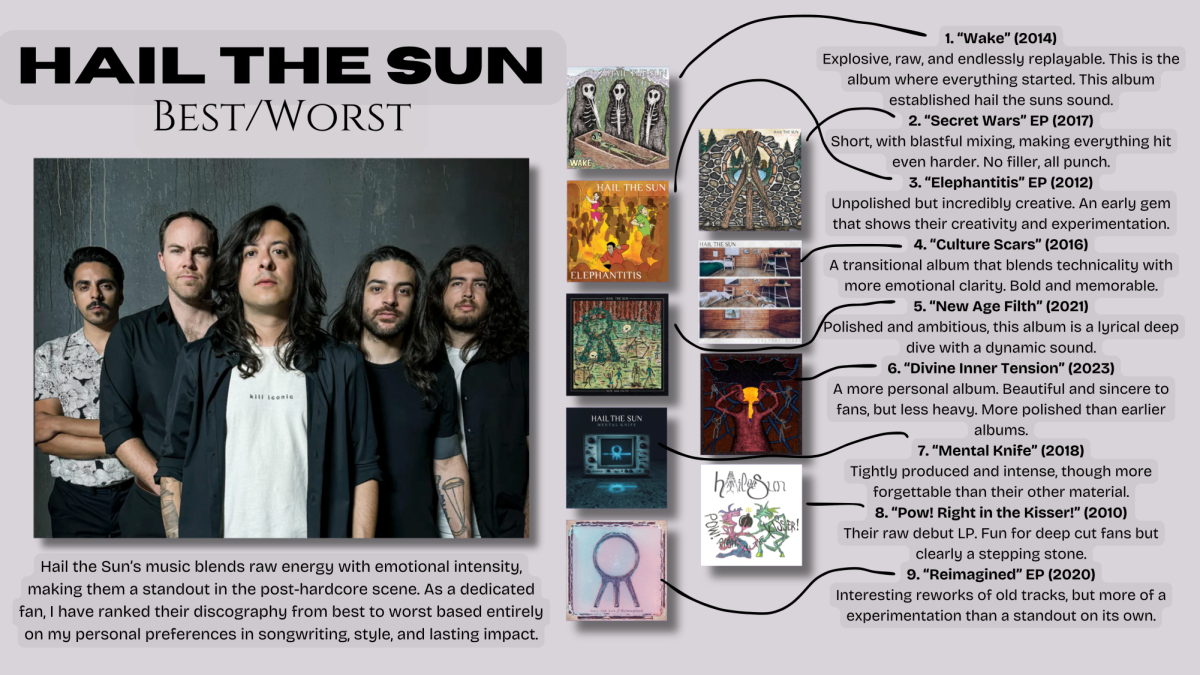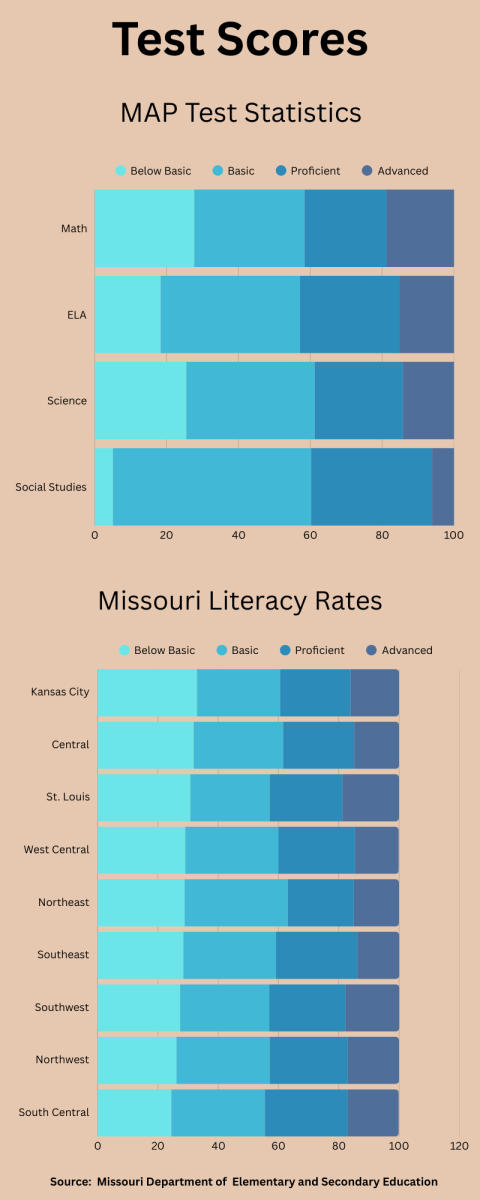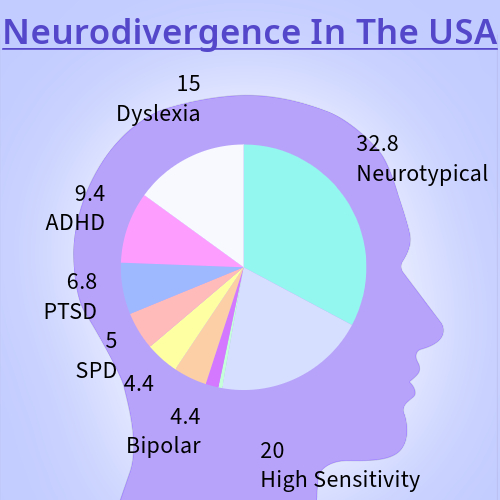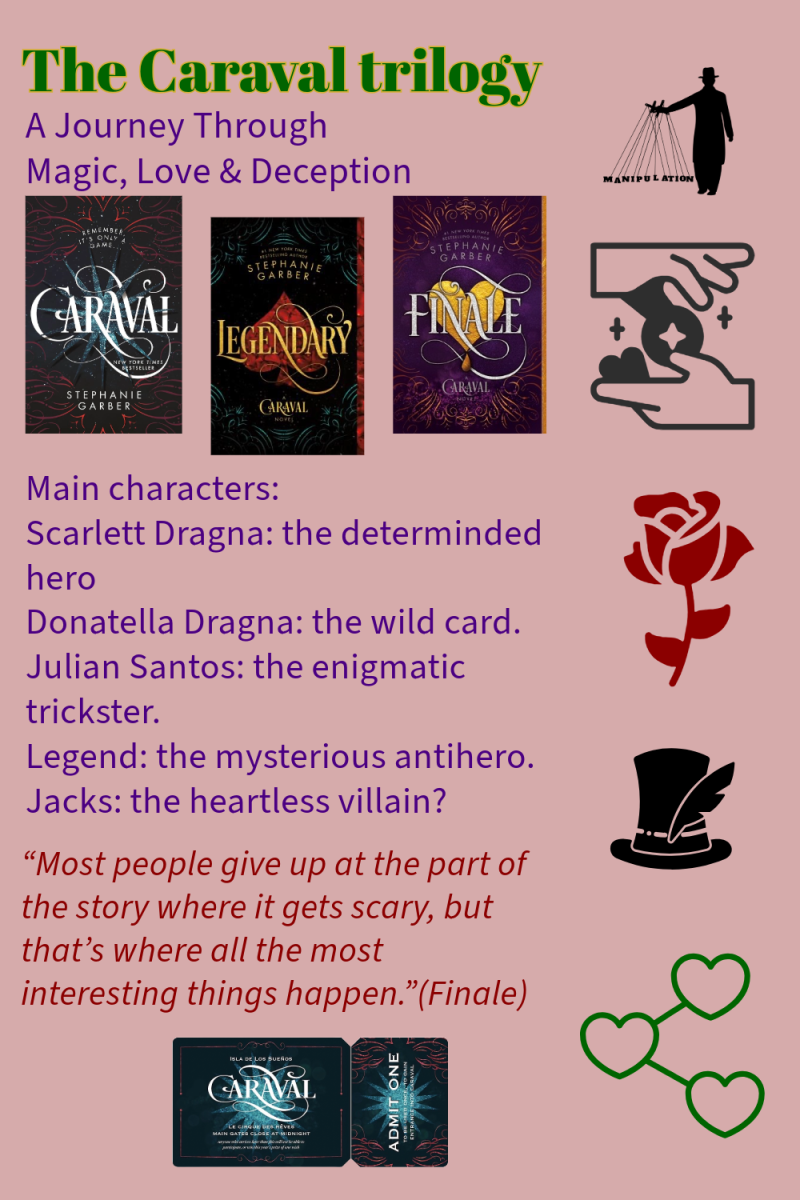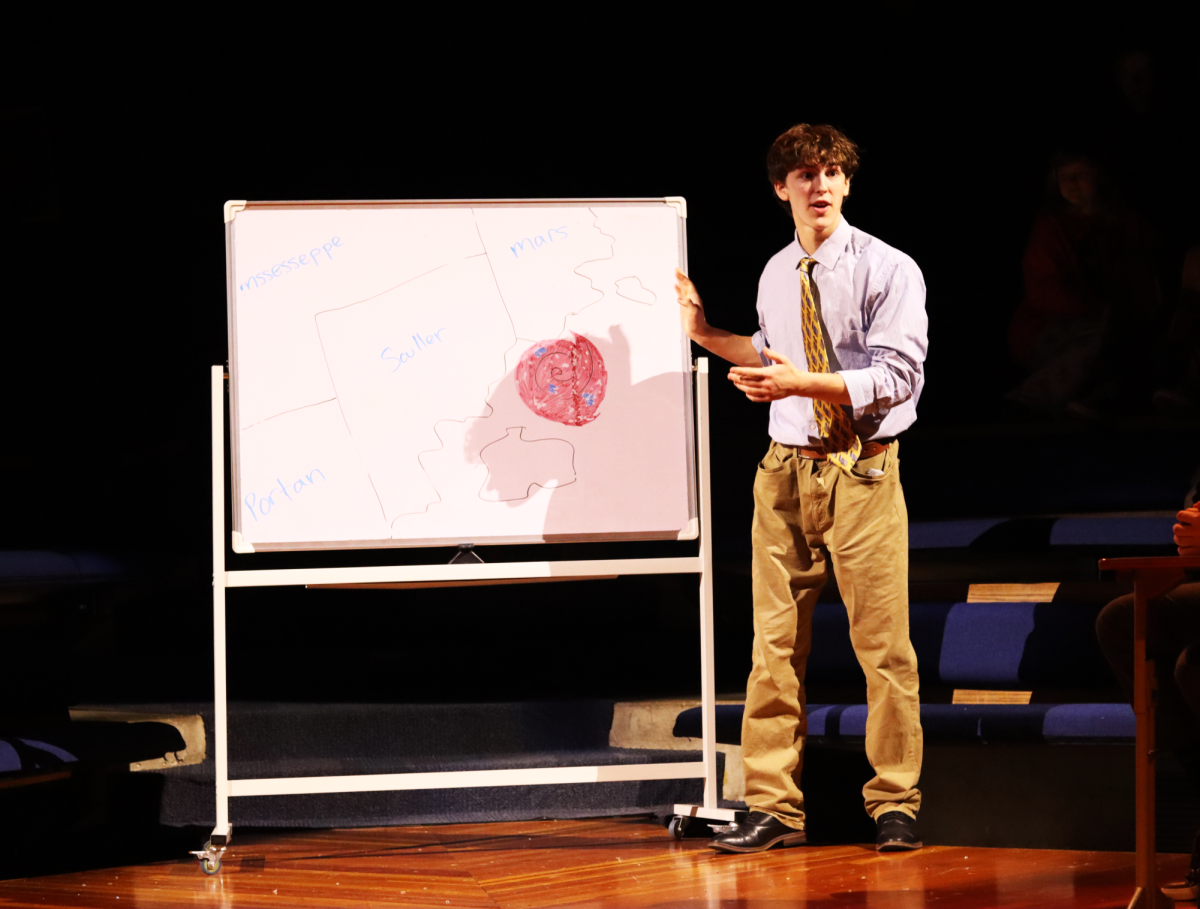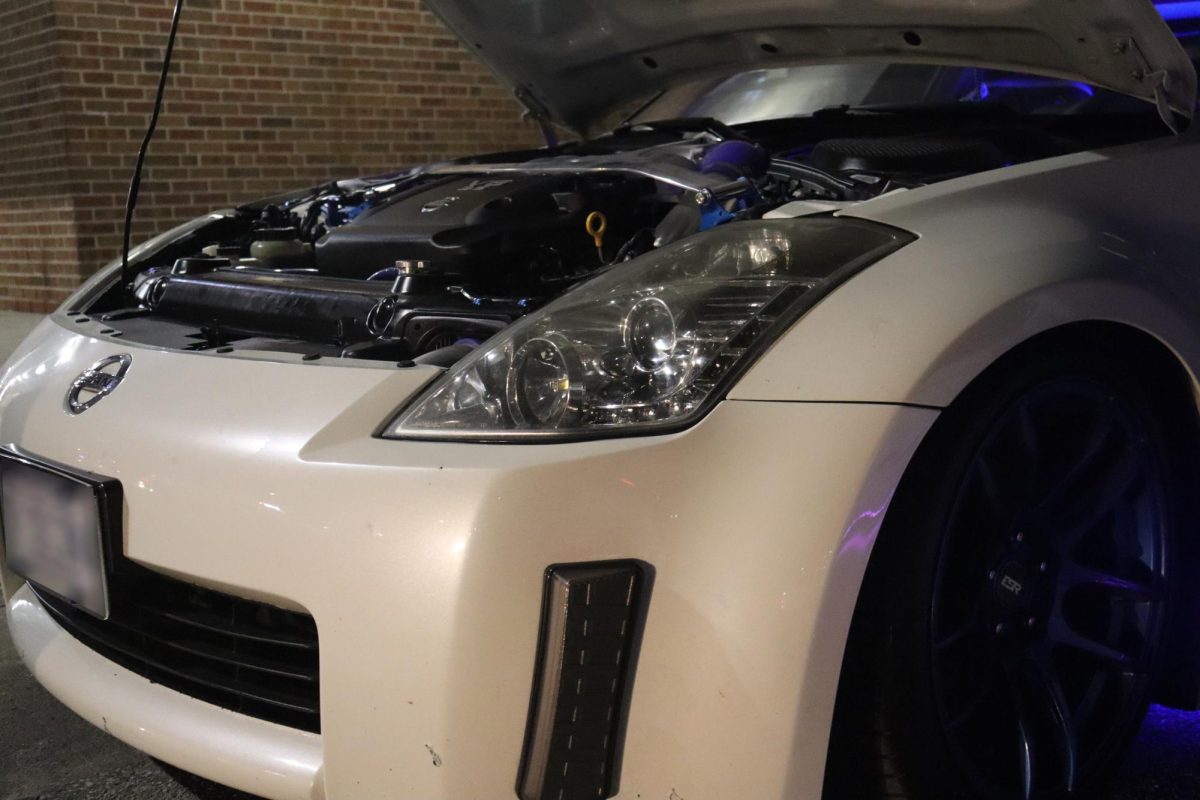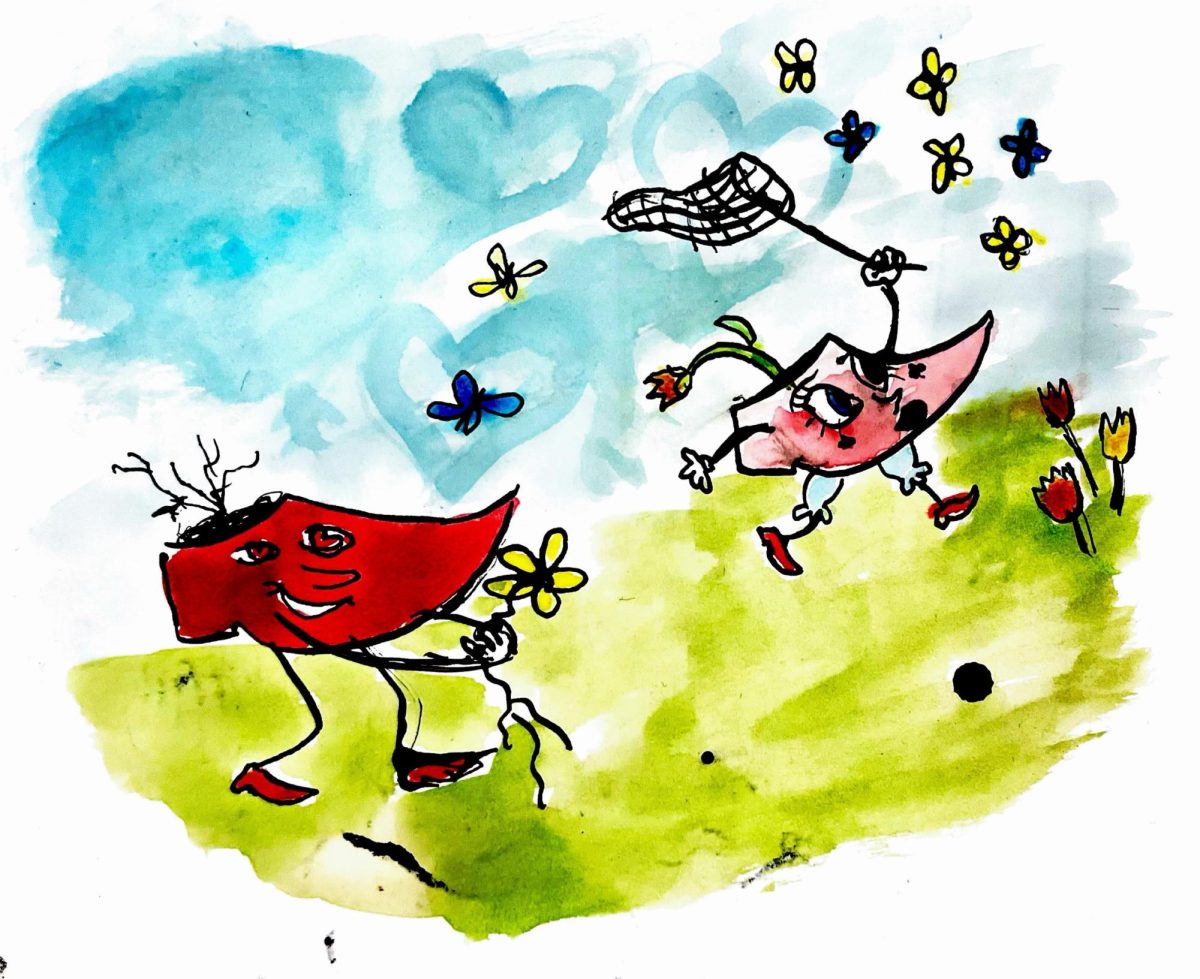 When I was leaving the theater after seeing “Dune: Part Two,” I was both disturbed and giddy with excitement. I was very impressed by the similarities to the book, which is why I had both of my initial reactions.
When I was leaving the theater after seeing “Dune: Part Two,” I was both disturbed and giddy with excitement. I was very impressed by the similarities to the book, which is why I had both of my initial reactions.
The sheer grandeur of the film was awe-inspiring, from the giant shots of sandworms and armies, to the costume design and even the talented cast– which somehow gained even more stellar actors after having an already A-list cast in the first film.
“Dune: Part Two” has truly cemented the Dune film series as the definitive fantasy/sci-fi of the generation. I predict it will be the “Lord of the Rings” or “Star Wars” of the 2020s, which is a big feat, one that I hoped for after seeing “Dune: Part One” in the theater.
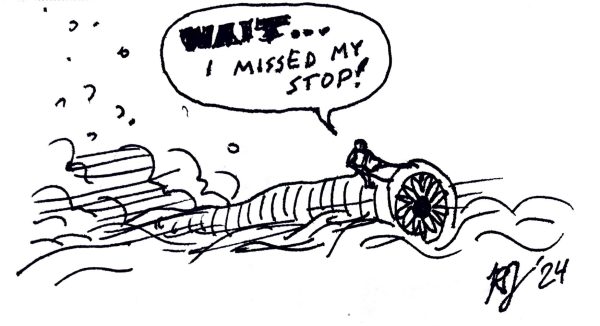
“Dune: Part Two” is the sequel to “Dune: Part One” which came out in 2021. Both films are directed by Denis Villenueve, whose films “Arrival” and “Blade Runner 2049” have cemented him as one of the premier sci-fi directors of the 2010s and ‘20s, and “Dune: Part Two” has further notarized Villenueve as one of the great sci-fi directors. It’s arguably his grandest film yet, and maybe even his best.
The content of the second installment of the Dune film series is adapted from the second half of the book “Dune” by Frank Herbert, which was released in 1965. The film seems to be set up to have a third part, which would be based on the second book in the Dune book series, called “Dune Messiah.” Based on the reception of “Dune: Part Two” and the unfinished way it ended, there will likely be a third installment in the film series.
The movie revolves around Paul Atreides and his mother Jessica, as they navigate the desert planet Arrakis, and, as they put it in the film, “harness desert power.” The political landscape of Dune is complex, and it is conveyed even better than in the first film, as the sequel has spread the scope of the story out to perspectives of House Corrino and the Emperor, Shaddam IV, played by the daunting Christopher Walken. And the perspective of the haunting House Harkonnen was also included more frequently, and Stellan Skarsgård’s Baron Vladimir Harkonnen was a formidable villain, one of the best roles I’ve seen Skarsgard in– even though he isn’t even the main villain of the second film.
Though included throughout the entire book “Dune,” Feyd-Rautha (Baron Harkonnen’s nephew and heir) didn’t debut until the second film, portrayed by Austin Butler. I wasn’t bothered by his being missing in the first film, because the character didn’t have any really important roles during that period of the story. His and other new characters’ inclusions in the second film are what made it so much better than the first. Butler’s performance was perhaps the most impressive in the entire film. The character, being a ruthless psychopath, was a big change from the characters Butler usually portrays, but that makes this role all the more impressive.
Now, I won’t say that “Dune: Part One” wasn’t also astounding, but it seemed unfinished without the context brought in the sequel. The story and world of Dune is incredibly complex, and it’s difficult to explain in film and dialogue– it’s done so well in these films, though. Other adaptations of the book have been done, such as David Lynch’s “Dune” from 1984, the Sci Fi Channel’s 2000 adaptation, “Frank Herberts Dune” and the unreleased but fabled “Jodorowskys Dune” from the 70s which was never even filmed. None of these had a good reception, because “Dune” is terribly difficult to translate from word into film. There is so much inner dialogue in the book that explains the backstories and scope, which makes the crucial background information difficult to convey on film. Villenueve’s adaptation is by far the best in my mind, and though it might still be quite difficult to understand for people who haven’t read the book, it conveys the story the best out of any adaptation. “Dune: Part Two” has added so much to “Dune: Part One” because part one really worried me: it briefly explained the fictional universe, but it didn’t go well enough into depth for a non-book-reader to grasp the scope of the world of “Dune.” “Part Two” has done so well at showing and not telling, which is one of the flaws of past adaptations, and it shows nearly the full landscape and politics of the book.
The two movies flow so well together that it really seems like one film split in two. I really enjoyed that aspect, because the flow of the story in the first book is not overly altered by the subtly separated plot lines of the two movies. The flow is one of my favorite things about the films; they move – I wouldn’t say slowly, but deliberately – with interesting political dialogue and gargantuan battle scenes that keep the audience on the edge of their seats. The second film is timed especially well, being a 2-hours and 45-minutes long movie it is never boring or pointless, even when parts that weren’t in the book were included.
I think the huge shots of ships and armies are some of the most recognizable and awesome parts of the film; it looks just like some of the “Dune” concept art I’ve seen for the books. The way the architecture, spaceships, and even costumes fit together is so impressive, and the film has taken such stylistic liberty with “Dune” but it fits so well. Those aspects weren’t overly explained in the book, but the way Villenueve interpreted them was beautiful and perfectly fitting. I especially enjoyed the depictions of Geidi Prime, the home planet of the Harkonnens. I read online that the scenes were filmed with an infrared camera to show the “black sun” of the Geidi Prime system, which was a super impressive and interesting way to show an imperceivable light.
I cannot over-exaggerate the sheer grandeur of the film, it is so impressive and beautifully done. The themes carried over so well from the book, with the same amount of subtlety. The disturbing cautionary themes are so timeless and still applicable, and it’s amazing to see how the nearly identical meanings are just as impactful as they were when they were written in the 60s. All of the aspects of this film, from sound to appearance to the acting were enthralling and impressive.
“Dune: Part Two” has cemented the film series as the definitive sci-fi of this generation, and I’m eagerly looking forward to the rumored third installment.





